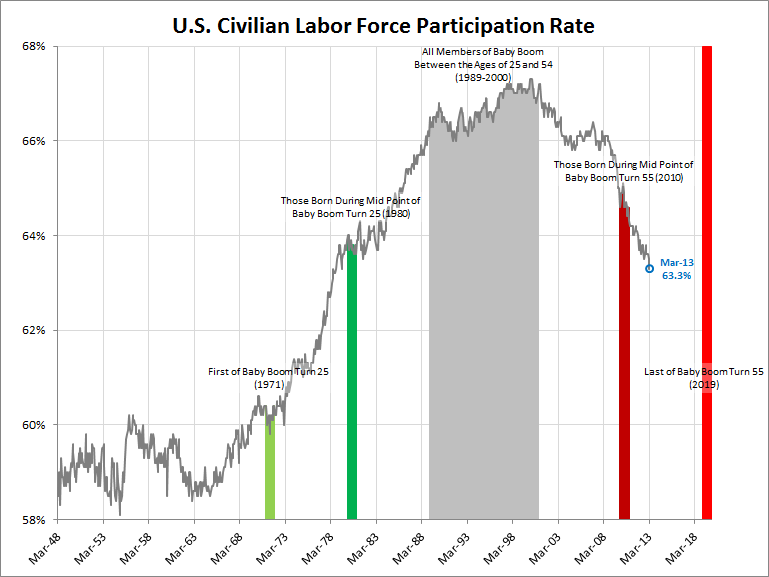During the month of March, the U.S. civilian labor force participation rate fell to 63.3%, the lowest level since August 1978.
The participation rate is the ratio of non-institutional individuals age 16 and older who are either are either employed or actively seeking work, relative to the total non-institutionalized civilian population.
There are a couple of possibilities as to why this rate has generally fallen since a peak of 67.3% in January 2000. First, some individuals could simply have stopped actively looking for employment despite desiring a job. Second, individuals might not care to work due to a variety of reasons including retirement.
The second possibility for a decline in the labor force participation rate, demographics, is explored in the chart below.
After the end of World War II, there was a prolonged, large spike in the number of births in the United States. Generally this period, from 1946 to 1964, is referred to as the Baby Boom.
Coupling the Baby Boom with the prime age that people in the U.S. tend to be employed (age 25-54) the chart follows the possible influence this generation has had on the labor force participation rate in the United States.
Members of the Baby Boom generation turn 25
- In 1971, those born in 1946 (the front end of the baby boom) turned 25
- In 1980, those born in 1955 (the mid point of the baby boom) turned 25
- In 1989, those born in 1964 (the last year of the baby boom) turned 25
All Members of the Baby Boom generation are between the ages of 25 and 54
- From 1989 through 2000 all members of the baby boom generation were between the ages of 25 and 54. This corresponds with the high plateau that was achieved in the civilian labor force participation rate.
Members of the Baby Boom generation turn 55
- In 2001, those born in 1946 turned 55
- In 2010, those born in 1955 turned 55
- In 2019, those born in 1964 will turn 55
Data Source: U.S. Bureau of Labor Statistics
Though it is difficult to forecast the future direction of the U.S. civilian labor force participation rate, demographics are an important factor to consider.
